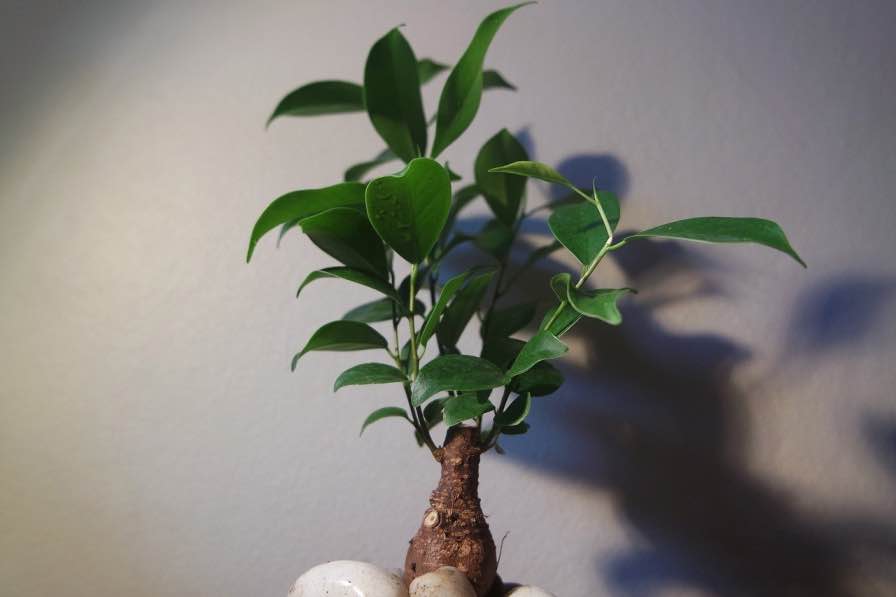Large plants are majestic and striking pieces that add a dose of visual interest to any garden. While often grown outdoors, large plants also have a place indoors as well. In this article, we’ll look at some tips for growing large plants indoors, and doing so successfully. These tips will help you cultivate larger plants and trees, and help you save space while doing so. Whether you’re looking to grow a fruit tree, or a decorative fig, these tips will help you get started on the right foot and make growing these larger plants easy.
Start With Smaller Varieties
Our first tip is to be on the lookout for plants of your chosen variety that grow smaller and take up less space. These are called a lot of different names, but some common ones are miniature, or dwarf.
For example, many types of fruit trees are available as dwarf fruit trees. These are essentially the same type of plant but designed to grow significantly smaller than full sized varieties.
This allows indoor gardeners to grow a plant that is perfectly healthy, and still produces fruit, but takes up less space. This makes growing these large plants much less space intensive, and ultimately easier to grow.
You might also find smaller varieties of larger fruits and vegetables. Watermelons, for example, have a large number of varieties that grow smaller and more compactly than the traditional full-sized plant.
Not all plants have miniature or dwarf varieties, but it doesn’t hurt to check. Those that do though provide an interesting opportunity for those growing with limited space.
Ensure They Have a Properly Sized Container
Another key is to make sure that you’re starting with a container that is large enough to accommodate your plant. Many larger plants need relatively large containers, and having one that is too small can be detrimental to the plant.
On the other hand, you also usually don’t want to provide a container that is too big. Many plants don’t like to have too much room and do well in containers that are just slightly larger than their root ball. This also reduces the area for things like pests and disease to take hold, and prevents sitting water outside the range of your plant’s roots.
Going with a proper sized container is also important for optimal growth. Plants that are in very large containers will often prioritize root growth to the detriment of flowers and foliage.
In most cases, you want your container to be a few inches larger than the root ball of your plant. This gives space for your plant to grow without being too large and susceptible to disease and pests.
Be Prepared To Repot
Building off the above, you should also be prepared to repot your plant several times during its lifetime. As large plants will tend to grow quite a bit each year, you’ll need to be on top of repotting to ensure it has room for continued growth.
In general, you’ll typically need to repot a fast growing plant every 1-2 years. Usually that will be sooner for younger plants and become less frequent as the plant ages.
The best time to repot is usually going to be in the spring right as the growing season for most plants kicks off. Repotting can be stressful, but when you do it at this time your plant is already primed for growth and has the best chance to recover.
When you’re repotting, use a pot a couple of inches larger than its current one. This gives more space for growth while also preventing some of the issues mentioned with too large of containers.
Learn Proper Care Techniques
No different than other plants, you’ll want to make sure that you’re learning about and providing the proper care to your large plants. This includes watering, sunlight, and fertilizing, along with any specifics for your chosen plant.
This is not unique to growing large plants indoors, but I think bears repeating anyways. The more you learn, the easier it will be to grow healthy plants. This is, however, extra important for larger plants as they can often be more nutrient hungry and need more water. Lacking care can quickly harm your plant, and lead to growth issues or death.
Give Them Some Outdoor Time
Lastly, giving your larger plants some outdoor time can help strengthen them and improve their growth. The sunlight outdoors is often more intense than indoors, and this extra sun can be helpful for encouraging plant growth.
It can also help strengthen your plant’s stem and help reduce chances of leaning. Gentle outdoor wind causes plants to naturally grow stronger to help support against it. Done early enough, and this can help prevent issues with leaning late on. This is beneficial to plants like the fiddle leaf fig that can develop weak trunks if not exposed to a stimulus that encourages otherwise.







